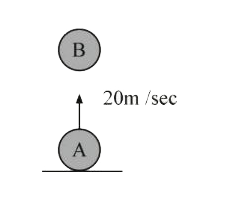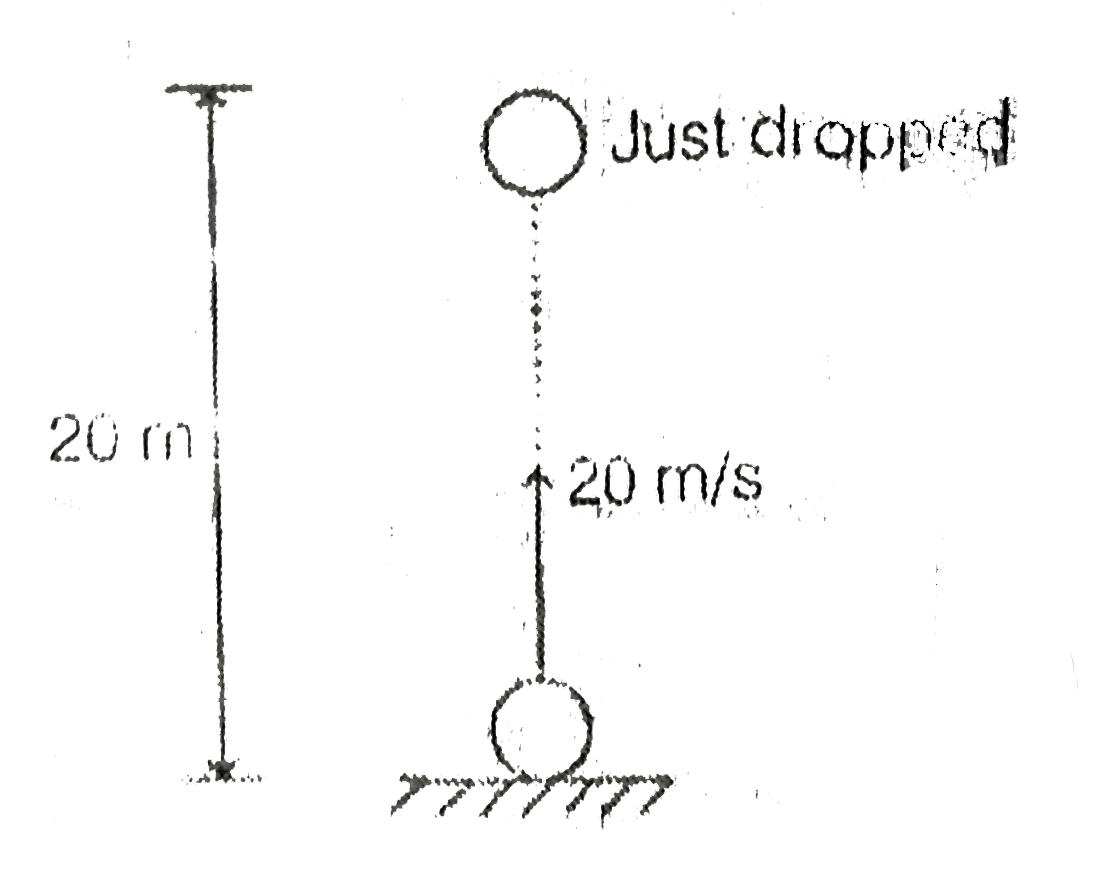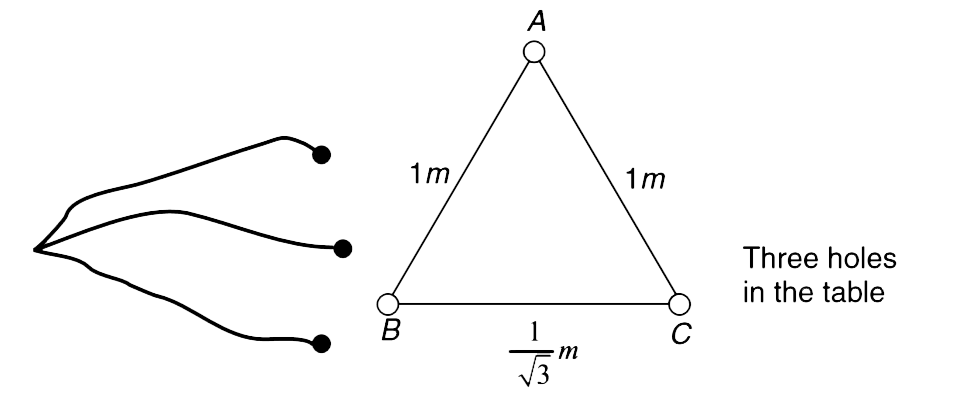An astronaut on the Moon simultaneously drops a feather and a hammer. The fact that they land together shows that:
no gravity forces act on a body in a vacuum
the acceleration due to gravity on the Moon is less than on Earth
in the absence of air resistance all bodies at a given location fall with the same acceleration
the feather has a greater weight on the Moon than on Earth
The correct Answer is:C
To solve the question regarding why a feather and a hammer dropped by an astronaut on the Moon land together, we can analyze the options provided and apply our understanding of physics concepts, particularly the effects of gravity and air resistance.
1. Understanding the Environment:
- The Moon has a very thin atmosphere, which means there is almost no air resistance. On Earth, a feather falls slowly due to air resistance, while a hammer falls quickly due to its weight.
Hint: Consider the role of air resistance in the motion of falling objects.
2. Analyzing the Options:
- Option 1: "No gravity forces act on a body in a vacuum."
- This statement is incorrect. Gravity acts everywhere, even in a vacuum. The Moon has gravity, albeit weaker than Earth's.
Hint: Remember that gravity is a universal force that acts on all masses.
- Option 2: "The acceleration due to gravity on the Moon is less than that on Earth."
- While this statement is true (the Moon's gravity is about 1/6th that of Earth's), it does not explain why the feather and hammer fall together. The acceleration due to gravity affects all objects equally regardless of their mass.
Hint: Think about how gravity affects different objects in the same location.
- Option 3: "In the absence of air resistance, all bodies at a given location fall with the same acceleration."
- This statement is correct. In the vacuum of the Moon, both the feather and the hammer experience the same gravitational acceleration, leading them to fall at the same rate.
Hint: Consider how the absence of air changes the dynamics of falling objects.
- Option 4: "The feather has a greater weight on the Moon than on Earth."
- This statement is false. The weight of an object is the product of its mass and the acceleration due to gravity. Since the Moon's gravity is less, the feather's weight on the Moon is also less than on Earth.
Hint: Recall the formula for weight and how it changes with gravity.
3. Conclusion:
- The correct explanation for why the feather and hammer land together is given by Option 3: In the absence of air resistance, all bodies at a given location fall with the same acceleration.
Final Answer:
The fact that the feather and hammer land together on the Moon shows that in the absence of air resistance, all bodies at a given location fall with the same acceleration.
- The Moon has a very thin atmosphere, which means there is almost no air resistance. On Earth, a feather falls slowly due to air resistance, while a hammer falls quickly due to its weight.
- Option 1: "No gravity forces act on a body in a vacuum."
- This statement is incorrect. Gravity acts everywhere, even in a vacuum. The Moon has gravity, albeit weaker than Earth's.
- While this statement is true (the Moon's gravity is about 1/6th that of Earth's), it does not explain why the feather and hammer fall together. The acceleration due to gravity affects all objects equally regardless of their mass.
- This statement is correct. In the vacuum of the Moon, both the feather and the hammer experience the same gravitational acceleration, leading them to fall at the same rate.
- This statement is false. The weight of an object is the product of its mass and the acceleration due to gravity. Since the Moon's gravity is less, the feather's weight on the Moon is also less than on Earth.
- The correct explanation for why the feather and hammer land together is given by Option 3: In the absence of air resistance, all bodies at a given location fall with the same acceleration.
The fact that the feather and hammer land together on the Moon shows that in the absence of air resistance, all bodies at a given location fall with the same acceleration.
Similar Questions
A sphere A is thrown up with velocity 20m/sec from the ground. Sphere B of same mass is dropped from a height of 80 m simultaneously, at time t = 0 so that both collide in air and stick together. Find the time (in second) after which the combined mass will fall on the ground. (Calculate from t = 0)(g=10m/sec2)
 View Solution
View SolutionTwo astronauts who land on the moon cannot talk with each other. What could be the reason for this ? Suggest a method for them to talk each other.
View Solution
Knowledge Check
- Question 1 - Select One
In a vacuum, a five-rupee coin, a feather of a sparrow bird and a mango are dropped simultaneously from the same height. The time taken by them to reach the bottom it t1,t2andt3 respectively. In this situation, we will observe that
At1>t2>t3Bt1>t3>t3Ct3>t1>t2Dt1=t2=t3 - Question 2 - Select One
An astronaut lands his spacecraft on the surface of moon and observes the sky. He will find the colour of sky as
Adeep blueBlight blueCwhiteDdark - Question 3 - Select One
Something has happened in the last twenty years that surely must ...1... anything that has happened before. Some historians are already saying that thrust ...2... space represents a vital turning point in history. Moon flights are considered ...3... less than steps in human evolution ...4... to the time when life in earth emerged from the sea and established itself on land.
Of course, not everyone ...5... enraptured by space. Critics have often said that space flight has been an ...6... use of resources that should have ...7... to feeding, clothing and housing prople.
There is, however, no proof that if we had ...8... been working on space, we would have done anything of great human value.
In fact, research and exploration have a ...9... spin-offs, quite apart from the fact that they demonstrate that ...10... is alive and insatiably curious.AEconnomicalBExtravagantCAppropriateDBenevolent
Two astronauts who land on the moon cannot talk with each other. What could be the reason for this ? Suggest a method for them to talk each other.
View SolutionA small ball A is.thrown up with a velocity 40ms from the ground. Another identical ball B of same mass is just dropped from a height of 50m simultaneously at time t=0 so that both collide in air and stick together. Find the value of t (in s) at which combined mass will fall to the ground. (g=10m(s)2)
'(##CEN_KSR_PHY_JEE_C08_E01_023_Q15##)'View SolutionTake a sheet of paper and piece of stone. Drop the two together from the second floor of a building. Check if both of them reach the ground simultaneously. Explain why if the answer is 'yes' and why not if the answer is 'no'.
View SolutionTwo identiacal masses are as shown in figure. One is thrown upwards with velocity 20 m/s and another is just dropped simultaneously.
The masses collide I air and stick together. After how much time the combined mass will fall to the gorund (calculate the time from the starting when the motion was started )
 View Solution
View SolutionThree identical masses are attached to the ends of light strings, the other ends of which are connected together as shown in the figure. Each of the three strings has a length of 3 m. The three masses are dropped through three holes in a table and the system is allowed to reach equilibrium.

(a) What is total length of the strings lying on the table in equilibrium? (b) Select a point K inside the △ABC such that AK + BK + CK is minimum, use the result obtained in (a) and the fact that potential energy of the system will be minimum when it is in equilibrium.View Solution

